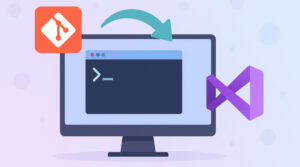Java continues to evolve with each new release, it was just the last year when its predecessor Java 21 was released in September 2023. It brings several important features, including improvements bringing with it cutting-edge features, performance improvements, and enhancements that make life easier for developers and enterprises alike. Java 23 is no exception, with a host of new updates designed to streamline coding practices, boost performance, and enhance security.
In this blog, we’ll dive into what is Java, the types of Java, What is OpenJDK or JDK in relation to Java? and What’s new in Java 23, let’s check that out.
What is Java
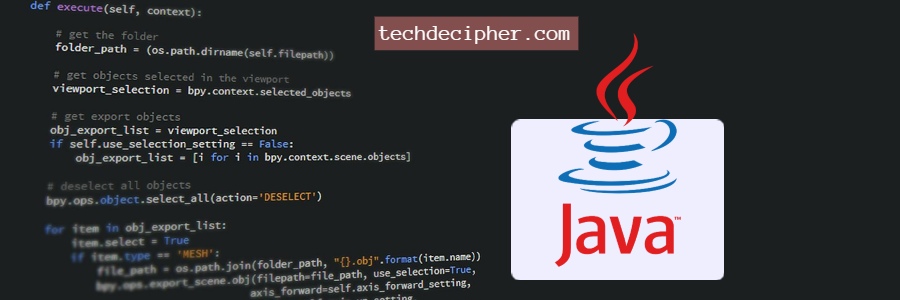
Java is a versatile, object-oriented programming language designed to be platform-independent, meaning it can run on any system with a compatible Java Virtual Machine (JVM). Created in 1995 by Sun Microsystems (now owned by Oracle), Java is renowned for its portability, robustness, and high-performance capabilities. Java follows the principle of “Write Once, Run Anywhere” (WORA), making it a preferred choice for developers looking to build applications that can run seamlessly across different platforms.
What is OpenJDK or JDK in relation to Java?
The JDK (Java Development Kit) is essential for developing Java applications; it includes the JRE, compiler, and tools needed to write and run Java programs. OpenJDK is the free, open-source version of Java SE and serves as the foundation for all modern Java distributions. It’s where new Java features are first developed and tested before being included in commercial versions like Oracle’s JDK, which may offer extra enterprise features. Both are built on the same core technologies, but most developers prefer OpenJDK for its capabilities and open-source GPL license.
Types of Java
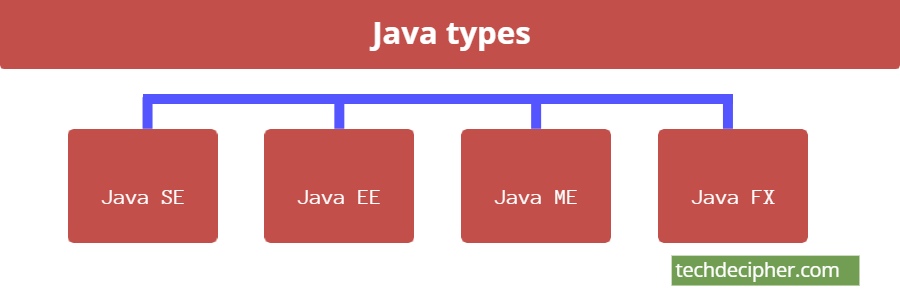
Java comes in several editions, each tailored to specific use cases:
Java Standard Edition (Java SE)
The core platform for developing standalone desktop applications and command-line programs. It includes the basic libraries and APIs for building and running Java applications, such as file handling, data structures, and networking.
Good for Development of: Desktop applications, command-line tools, core libraries, and utilities.
Java Enterprise Edition (Jakarta EE):
Designed for large-scale, distributed, and web-based applications, Java EE builds upon Java SE by adding additional layers. Layers may include APIs for web services, distributed computing, and enterprise-level applications like servlets, JSP, and EJB.
Good for Development of: ERP, CRM, large-scale web apps, web services and APIs, distributed systems, e-commerce, and financial software.
Java Micro Edition (Java ME):
Tailored for mobile devices, embedded systems, and Internet of Things (IoT) devices, Java ME offers a lightweight framework to build applications with limited resources.
Good for Development of: Mobile applications, embedded systems, IoT device system.
A platform used for creating rich client applications with immersive user interfaces. It provides advanced GUI libraries and is ideal for desktop applications requiring a modern look and feel.
Good for Development of: Desktop apps with advanced graphical interfaces, rich internet applications, multimedia apps, and modern UIs.
What’s new in Java 23?
Java 23 primarily focuses on the Java SE (Standard Edition) platform, which is the mainline Java development kit used for general-purpose computing. This includes updates to the Java Development Kit (JDK) with features like improvements to language syntax, runtime performance, and concurrency. Java SE is typically where new features are introduced and tested before they potentially flow into other Java platforms like EE, ME, or FX. So we will review the new changes in Java 23 through the lenses of Java SE.
1) Primitive Types in Patterns, instance of, and switch (Preview) – JEP 455
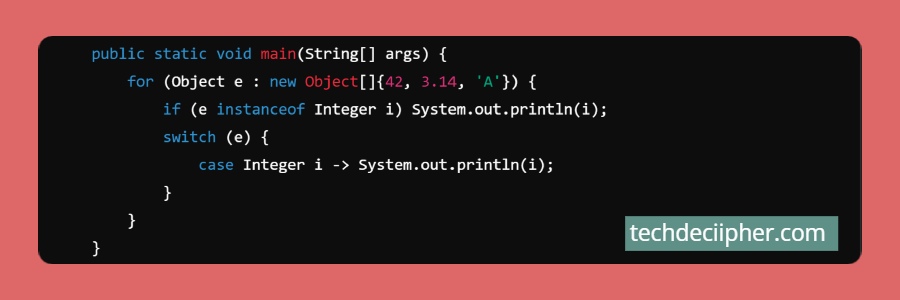
This feature removes previous limitations by allowing primitive data types like int, double, and char. It rather allows use directly in pattern matching with an instance of and switch statements. It simplifies code by letting developers handle both primitive and object types in the same way. This means you can write cleaner, more efficient code when performing type checks and pattern matching with primitives.
2) Module Import Declarations (Preview) – JEP 476
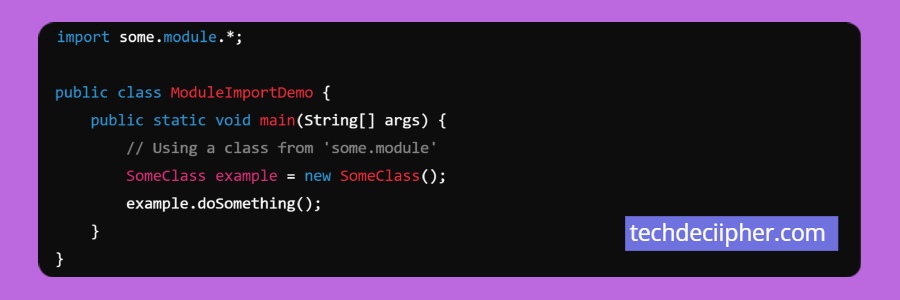
Java now enables developers to import all packages exported by a module with a single statement. This greatly simplifies the reuse of modular libraries. It makes it easier for beginners and all developers to use third-party libraries and essential Java classes without navigating complex package hierarchies. It streamlines the import process and makes your code cleaner and more maintainable.
3) Implicitly Declared Classes and Instance Main Methods (Third Preview) – JEP 477
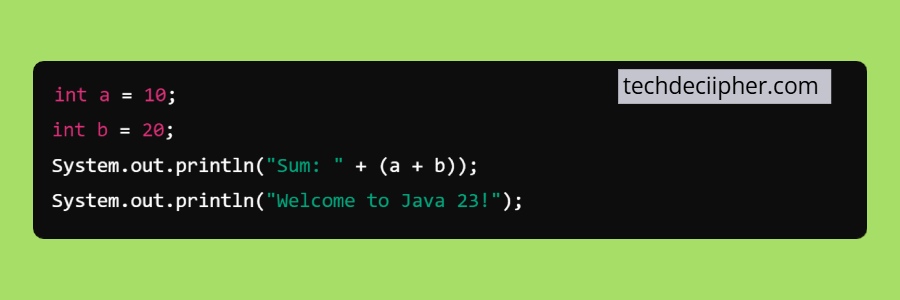
This enhancement allows you to write simple Java programs without explicitly declaring a class or a static main method. The compiler takes care of these details for you. This means beginners can start coding right away without getting overwhelmed by boilerplate code meant for larger, more complex programs. It makes writing and understanding basic Java programs quicker and less intimidating, while still allowing seamless expansion into advanced features when needed.
4) Structured Concurrency (Third Preview) – JEP 480
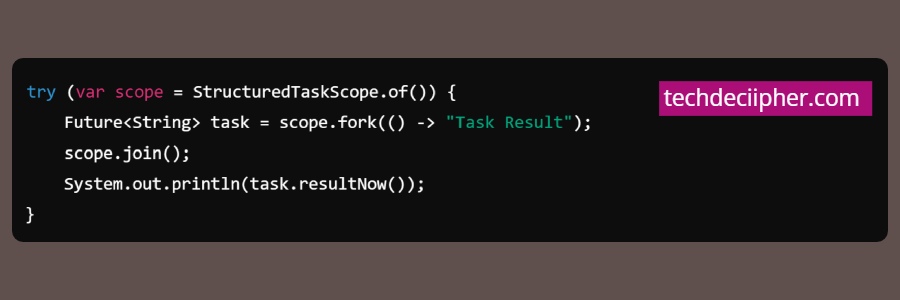
Structured Concurrency introduces a new way to manage multiple threads by treating groups of related tasks as a single unit of work. This approach streamlines error handling and cancellation, improving the reliability and observability of concurrent programs. It helps eliminate common issues like thread leaks and makes writing multithreaded code more intuitive. Developers can now handle concurrent tasks more safely and efficiently, making it easier to build responsive and robust applications.
5) Markdown Document Comments – JEP 467
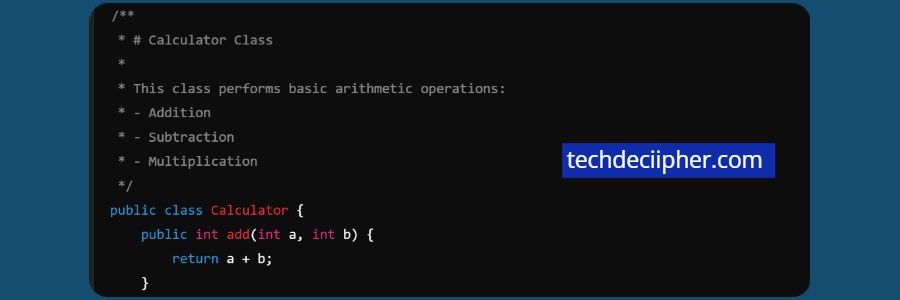
Java now supports writing documentation comments using Markdown instead of just HTML and special Javadoc tags. This makes your source code documentation cleaner and easier to read and write. Since Markdown is widely used and more readable in plain text form, it simplifies the process of commenting on your code. Especially for those already familiar with Markdown from platforms like GitHub. This enhancement improves the overall readability and maintainability of your code’s documentation.
You may go through many other improvements Java 23 brings, please consider taping this link here.
Conclusion
Java 23 helps streamline code, improve efficiency, and enhance security. Whether you’re building modern cloud-native applications or optimizing enterprise systems, upgrading to Java 23 will bring tangible benefits to your development process. This concludes What’s new in Java 23. What programming language do you use for your development and why? Please let us know in the comments section below. If you need any help or have any suggestions to make, then do reach us via the contact page here. I also provide services to help you with your issues which you can find here. Happy World Teachers’ Day!




